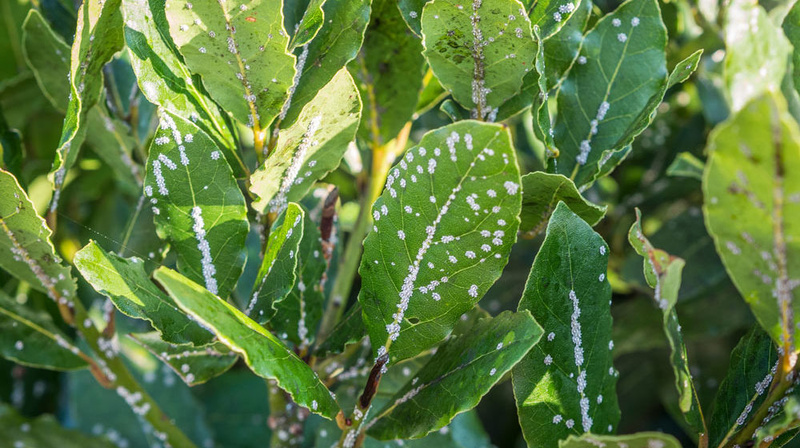
How to Get Rid of Black Sooty Mold
Black sooty mold on plant leaves hinders growth and indicates an insect infestation. Eliminating the mold means first identifying the pests, then spraying the proper insecticide. Take preventative measures and look out for warning signs to keep black sooty mold from coming back.
Have you noticed a dark flaky coating on the leaves and branches of some plants in your landscaping? “Black sooty mold” is common in Florida, especially in the summer, and must be addressed to keep plants healthy. This post will provide basic guidance on how to deal with the unwelcome fungus.
What Are You Dealing With?
Capnodium, more commonly referred to as black sooty mold, colonizes in patches on plant leaves. While it does not harm the plant directly, mold interferes with the plant’s ability to photosynthesize. The interference can stunt growth and cause an overall loss of vigor.
While black sooty mold is unsightly and damaging, it indicates something more significant: a pest infestation. Insects such as mealybugs, soft scales, aphids, and whiteflies feed on plant leaves and excrete a substance called honeydew. It is the large amount of honeydew deposits that invite mold growth.
The Culprits
Not all insects produce honeydew. In fact, some bugs are beneficial to plant health. So how do you know if you’re looking at beneficial bugs or soft-bodied, sap-sucking pests that lead to black sooty mold growth?
An internet search for images of the insects we mentioned above could be helpful, but be careful to diagnose the problem accurately. Harmful and helpful insects often look similar, and killing off the wrong type will leave you worse off than before.
If you’re unsure, call a professional before applying any chemical treatment.
Treatment Options
Because black sooty mold grows on honeydew, ridding your plants of the problem insect is the only way to eliminate the fungus. Skip the fungicide and go right to an appropriate horticultural oil or insecticidal soap.
First, identify the insect. Next, purchase a product that targets that pest since general insecticides may kill off beneficial insects. Follow the instructions for application, making sure to treat the underside of leaves, and reapply as directed and necessary.
Sooty mold should disappear on its own after the insects are gone. You can facilitate its removal by spraying it with a high-powered stream of water from a garden hose.
Preventative Measures for the Future
Proper plant care goes a long way in discouraging insect infestation and thereby preventing sooty mold growth.
Aphids and other pests are attracted to new plant tissue, so reducing excessive growth provides less temptation. Of course, young plants will grow and might need extra water or fertilizer. Don’t withhold what they need for fear of pests, but be careful not to over-water or apply too much fertilizer. Established plants typically will not need extra water or fertilizer.
Pruning in January and February, the dormant season, will also prevent new shoots from growing.
A Warning from Ants
Some ants feed on the honeydew left behind by pests, so their presence can serve as a warning of an insect infestation.
Periodically walk your property and look for black sooty mold. On mold-free shrubs, notice if there are more ants than usual in a certain area. Carefully examine any plants with ants, looking for soft-bodied sap suckers like aphids, mealybugs, scales, and whiteflies. Quickly identifying and managing those insects could make the difference between a quick treatment and an all-out mold-control regimen.